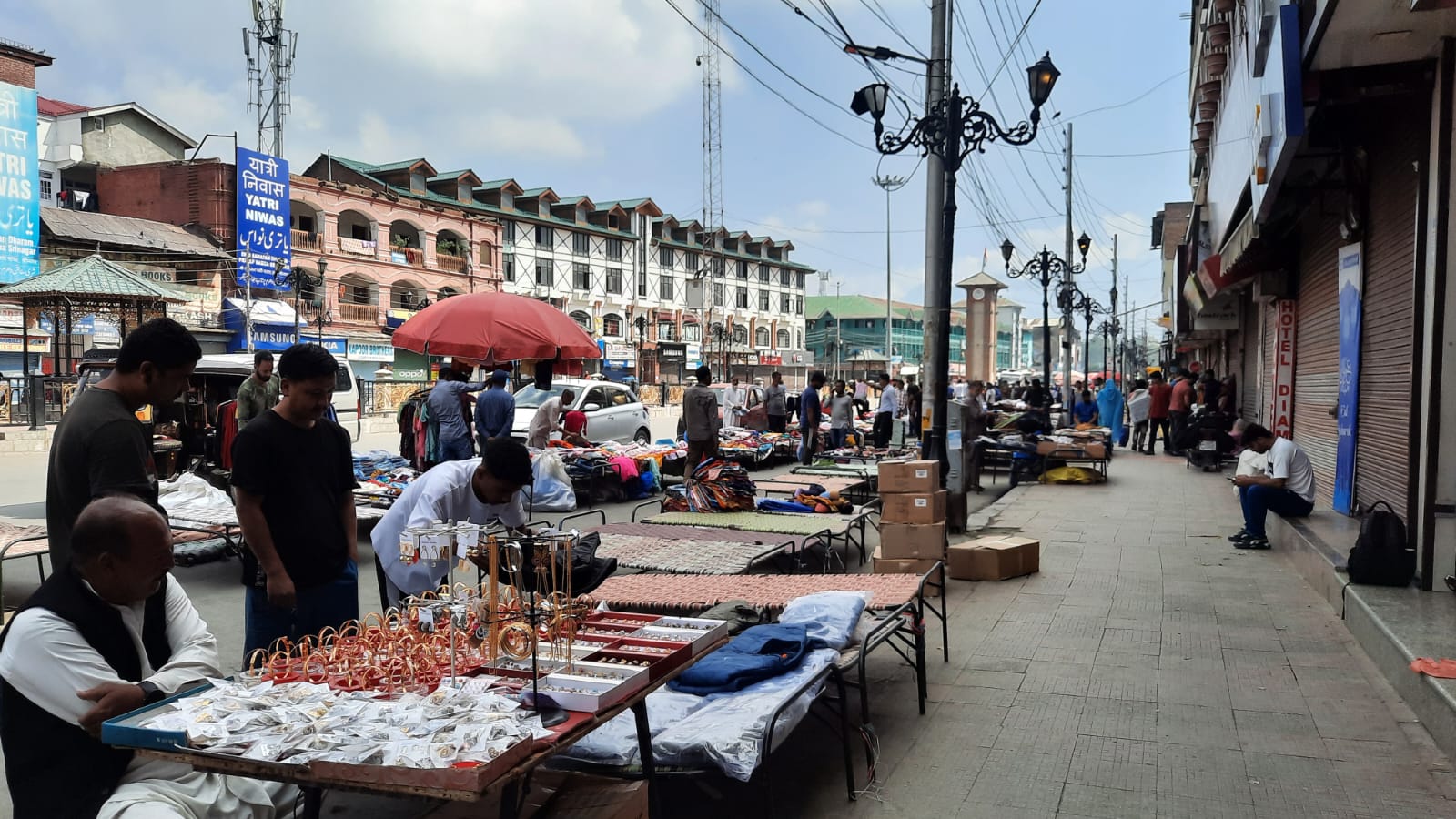It would be educative to look into the demography of Shabirpur, the small hamlet where the latest episode of violence in Saharanpur began – although now the houses are empty and men are a rare sight, especially in the northern area where most of the Dalit families reside.
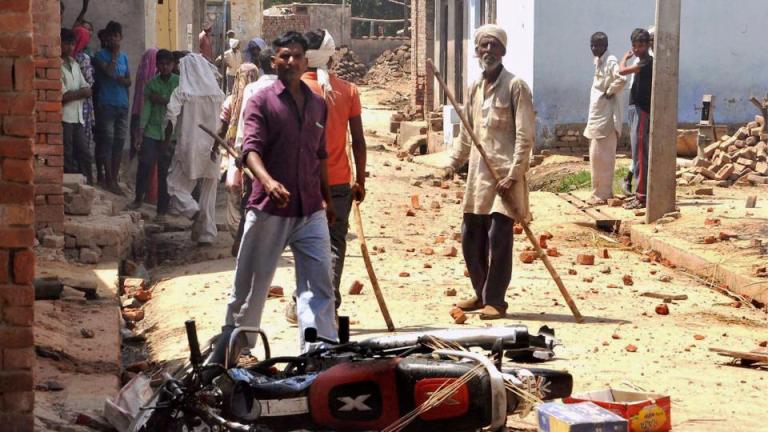
The village is home to about 5500 people. Dalits make up around 40 per cent of the population and the rest are Rajputs. Still, Shiv Kumar managed to win the panchayat polls held around four years ago. This enraged the Rajputs, who may have taken the election for granted. Had it been some years earlier, a Dalit may not even have dared to file a nomination. Hence, a “chamar” not only dared to contest but also emerged the winner. The seat wasn’t reserved for Dalits, who are fewer than the Rajputs, yet a Dalit managed to snatch a victory. The Rajputs had considered the position of Pradhan their birthright and were shocked.
Self-proclaimed martial communities like Thakurs, Gujjars, Jats and Tyagis dominate Western Uttar Pradesh, where Saharanpur lies. Although Dalits have a sizeable share in the population, still a commonly held notion is that their blood is cheaper than cow dung.
In the whole of Saharanpur district, Dalits outnumber Rajputs. Of the around 35 lakh people, roughly 42 per cent are Muslims and 26 per cent Dalits. Regardless of their numbers, Dalits didn’t matter in local politics till the Bahujan Samaj Party came into the scene. Mayawati represented the erstwhile Harora Assembly seat of the district in the 13th and 14th assemblies. “People call this the period of Dalit renaissance”, says Rashid Akhtar, a resident of Saharanpur city. “But the others still haven’t able to digest the political awakening among Dalits and their active participation.”
After the 1990s, statues of Dr Bhimrao Ambedkar began dotting Saharanpur. “It is the mark of our existence,” says Pawan Kumar Jatav, a resident of Behat, a small town in Saharanpur district. “Statues don’t give food, they don’t protect, they don’t change your social status. Still, they bring the feeling of empowerment.”
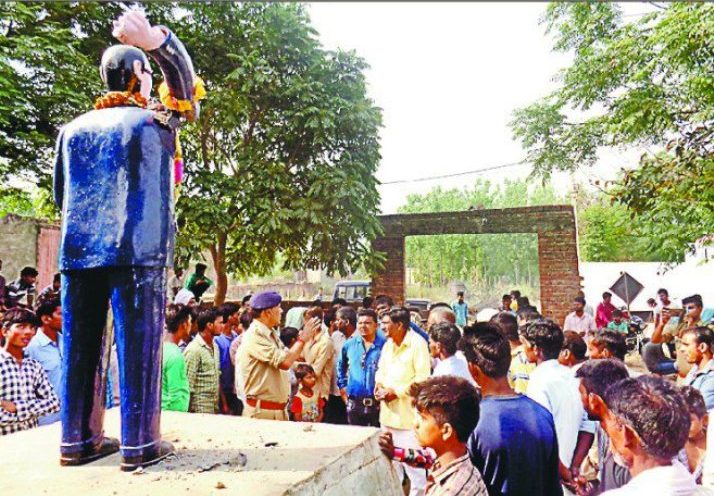
On 14 April this year, Shiv Kumar decided to memorialize his victory as the first Dalit Pradhan of Shabirpur by erecting the statue of Babasaheb in the village. There was nothing abnormal about it, as gates, memorials and statues of sociopolitical icons are a common sight throughout western Uttar Pradesh. Each of them has been put in place to commemorate the political success of a particular community. “But the sweet of one is the salt in the wound for other”, says Shah Alam, who runs a general store in Nanauta. “It is not easy for Rajputs to digest the political success of a Dalit in a village where they are numerically dominant.” If Shivkumar’s success was rubbing salt into the wound, erecting the Ambedkar’s statue was like replacing the salt with chillies.
Rajputs opposed Shiv Kumar’s plan of building an Ambedkar statue, and the rift between the two communities widened. Despite all requests and attempts at reconciliation, Dalits weren’t allowed to erect the statue. They were asked to obtain permission from the district administration. The district administration sniffed out a social rift in the making and therefore refused permission. This left the Dalits enraged. They were going to have to live with these insults that weren’t new to them.
Then came the fateful day of 5 May 2017, when a confrontation in Shabirpur sparked the violence in the whole of the district. It was the birth anniversary of Maharana Pratap, a medieval-era Rajput king of Chittor. The Rajputs have turned him into an icon based on the belief that he challenged the central authority of Mughal Emperor Akbar. What history says is that Akbar never entered the battlefield to fight Maharana Pratap. Rather, he sent his Rajput general, Raja Man Singh, with 5000 men to fight Maharana Pratap in the battle of Haldighati. Rana could never win but he wasn’t forced to surrender either. Rana later died on a hunting expedition. After the victory of the Bharatiya Janata Party (BJP) in the recently concluded Uttar Pradesh Assembly Election and the election of a Rajput as the chief minister, Maharana Pratap has re-emerged as the Hindu poster boy and a symbol of Rajput Pride.
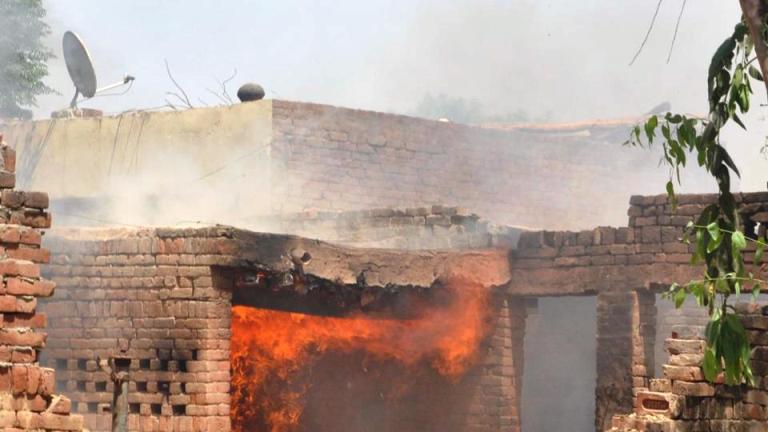
To mark Maharana’s birthday, Thakurs of Shabirpur village took out their own procession. “The procession was moving towards Shimlana when Dalits in Shabirpur, headed by Shiv Kumar, objected to the loud music” says Narendra Singh Rana, Deputy Superintendent of Police, Deoband.
Ramwati, a local resident remembers the day: “They were carrying swords and sticks in their hands and were shouting slogans onto loudspeakers. They were many in numbers and when they reached our locality, their noise only grew louder. Our lads only asked them to lower the noise and pass peacefully.”
Arguments and counter-arguments followed. Village Pradhan Shiv Kumar reached the spot and asked them to show the permission for holding the procession in the locality.
“How dare he ask for the permission?” says Om Pal Singh, a local Rajput. “It is our village. We have lived here for ages and no one, let alone Dalits, has challenged our authority here.”
Another local, Rajbir, says, “Hadn’t Rajputs taken issue with the building of Babasaheb’s statue, no one would have questioned their procession. They have pride and we don’t.”
Their pride now hurt, Rajputs razed many Dalit homes. Many were set alight. People were beaten up. Many sustained severe injuries and one person died. Homes were looted, cattle were taken away and the violence didn’t end that day. Dalits didn’t give in. A series of violent incidents followed the events of Shabirpur on 5 May.
The police have filed cases against more than 300 people. There have been 34 arrests, most of them Dalits. The Dalits say the police are on the side of the Rajputs. Bhim Army, a local organization of Dalits, is the prime target. Its founder, Chandrashekhar, is on the run.
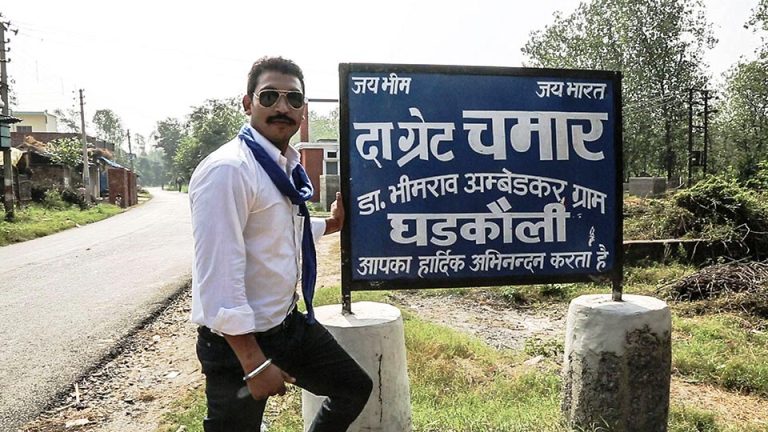
Bhim Army hasn’t incited or been involved violence. Founded some six years ago, Bhim Army is a small organization. Still, many Dalits have come out in support of the outfit. They say Chandrashekhar is fighting for their dignity.
“Bhim Army isn’t new to disputes”, says Subhash Chandra Dubey, senior superintendent of police, Saharanpur. “Some time ago, they had put a board on private land in Ghatkauli that read ‘The Great Chamar’.” At the time, Rajputs had objected to it. Later, the board was painted black and a statue of Dr Ambedkar was desecrated.
Incidentally, on April 20, the BJP had taken out an “Ambedkar” procession in Sadak Dudhli village, Saharanpur, in the name of Ambedkar. At the time, Muslims were the target. “There is a striking similarity between the incidents of Dudhli and Shabirpur”, Qazi Farhan, a social activist, says. The “Ambedkar procession” was taken out without permission and Muslims were targeted. Now the Maharana Pratap procession was held to target Dalits.
“For years, Dalits and Muslims have lived in peace and together they form a formidable alliance,” says Imran Masood, a Congress leader. “For BJP, it is the politics of divide and rule. They are using the historical icons to sow the seeds of social conflicts and to dominate the politics irrespective of the numbers.”
Based in New Delhi, India, ForwardPress.in and Forward Press Books shed light on the widespread problems as well as the finer aspects of Bahujan (Dalit, OBC, Adivasi, Nomadic, Pasmanda) society, literature, culture and politics. Next on the publication schedule is a book on Dr Ambedkar’s multifaceted personality. To book a copy in advance, contact The Marginalised Prakashan, IGNOU Road, Delhi. Mobile: +919968527911.

